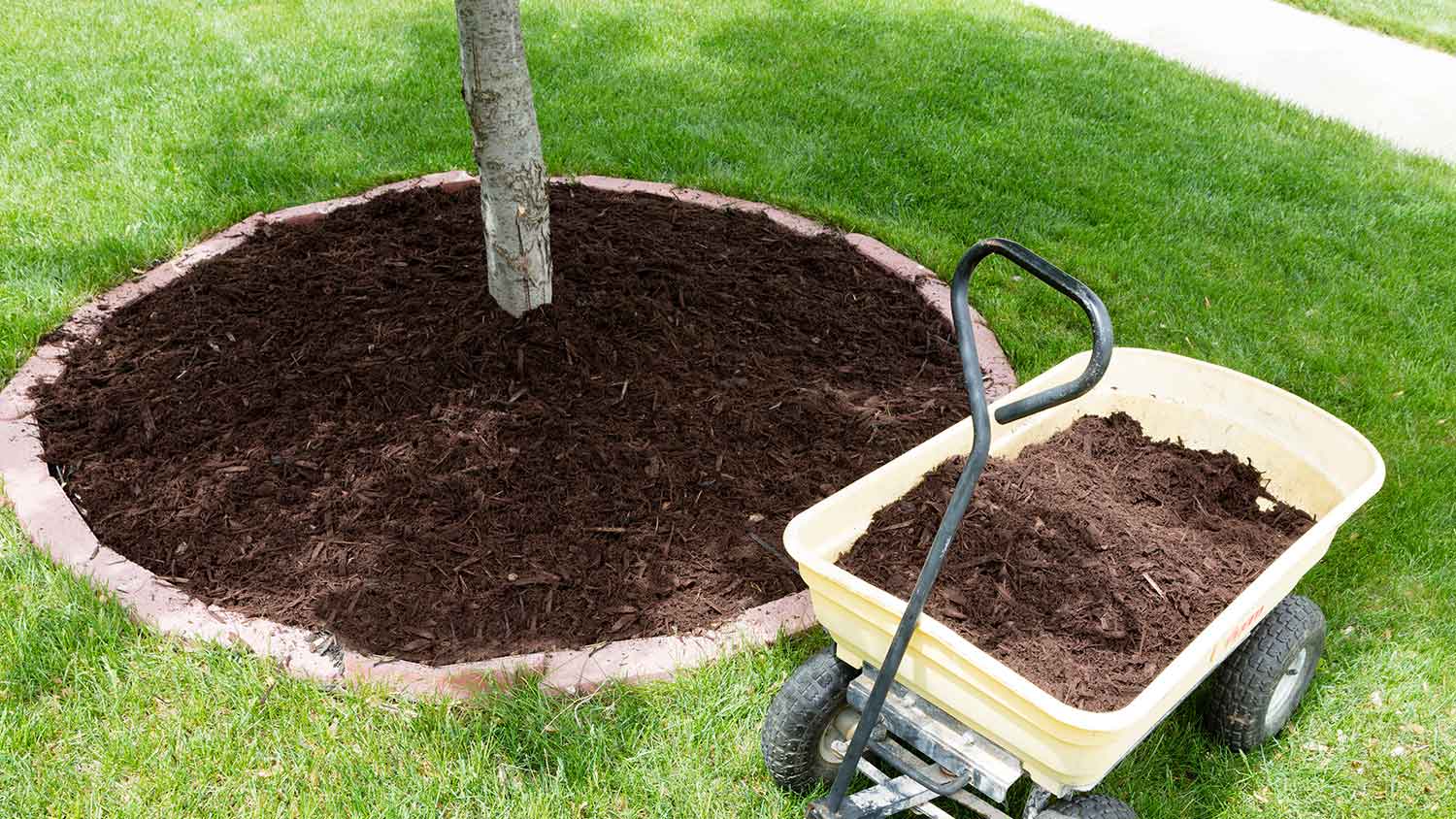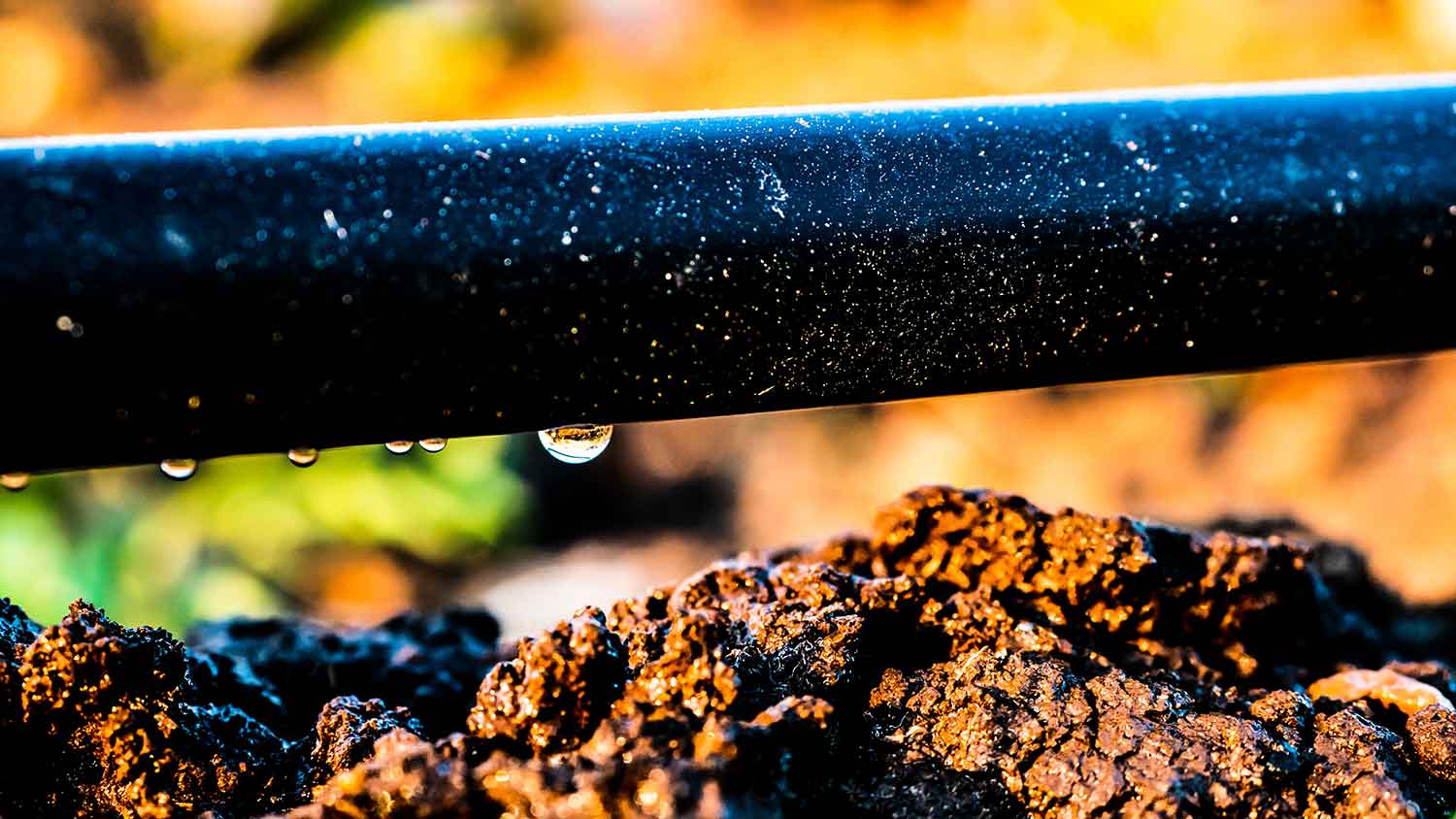
How much does a palm tree cost? The answer depends on the type of tree, its size, and other factors. Find out how much a new palm tree costs.
Too much hydration can pose significant damage


Overwatering a tree can cause severe damage and even kill it.
Some signs of overwatering can mimic underwatering.
Consulting an arborist can help save your tree.
Whether you have a freshly planted fruit tree or an old sturdy oak adorning your yard, they need adequate watering to flourish. But can you overwater a tree? You can. Proper watering is essential because you don't want to drown your tree or underwater it either.
If your tree isn't looking as lush as it should, then it may be from overwatering. Learn what signs to look out for to tell if you are overwatering your tree and how to save it if you are.
Trees will give you signs that you are overwatering them. The tree's leaves are the first places to look for stress, but you may notice negative changes in the bark and branches, too. Before you break out the garden hose again, look out for these signs of overwatering so you can adjust your watering schedule accordingly.
Wetness around the base of the tree, and the soil is soggy, not just moist
Wilted branches or leaves
Gummy residue on leaves
Curling or brown edges on the leaves
Newer sections of the tree dying off (if it's still growing)
Fruit dropping prematurely
Root Rot
If your tree shows signs of damage to the bark or roots, you should contact an arborist near you to determine if the tree is dying and can be saved.
Overwatering a tree can cause severe damage and even kill it eventually. It prevents the roots from absorbing oxygen and cannot support new growth. It can also cause root rot, which can cause the tree to die.
Saturated soil can cause mold, algae, and fungus to grow and harm your tree. All these things can make the tree more susceptible to diseases and pests. So, it's vital to figure out if your tree is overwatered so you can take action and save it before it's too late.
Is your tree showing signs of being overwatered? If so, don't fret just yet. There are some things you can do to help it recover and begin to thrive again. Take these steps if you've noticed overwatered tree signs:


If you notice pooling water around the tree showing signs of overwatering, you will need to fix any drainage issues that may be causing it. There are a few things you can do to fix poor drainage.
You can begin improving drainage by aerating your lawn. This will help break up the soil and allow water to seep into the ground more easily. Mixing compost into the soil can also help with drainage because it makes the soil softer and more absorbent.
However, if standing water is severe, you may need to install a french drain or have your lawn graded to assist in diverting water and prevent it from pooling.
Mulch has many benefits for plants and trees. However, since it retains moisture, you may need to remove it temporarily to allow the soil to dry out. Once your overwatered tree improves, you can add organic mulch back to provide insulation and nutrition. Remember to also fix any draining issues you have before replacing the mulch.
The best way to ensure you can save your overwatered tree is to consult a certified arborist near you. An arborist is like a tree doctor and will be able to determine if the problem is just from overwatering or if there are other issues with the tree. Getting a professional opinion can save you a lot of time and effort and can possibly save your tree's life.
Unfortunately, some signs that a tree is overwatered are the same as it being underwatered. Of course, checking the soil to see if it is soggy can help determine the cause. There are some other signs to keep an eye out for to make sure you are not underwatering your tree either, such as:
Wilted, curled, or dead leaves
Off-colored sections of leaves or bald patches where leaves should be
Early leaf drop (late summer or earlier)
Yellow or "scorched" appearance on leaves
A "gummy" residue on leaves
Bark damage (cracks, peeling)
Reduced quantity or quality of the fruit on fruit trees
Consider the situation "serious" if all the leaves on the tree are lightened, off-colored, or scorched. At this point, you should consider outsourcing the job to fix an under-watered or over-watered tree. Damage to tree bark should also warrant you calling in a professional. Hire a tree maintenance company near you to help determine if it can be saved or needs removal.
Trees have so many benefits and are always worth trying to save. They provide homes and food for wildlife, produce oxygen, purify the air, help with erosion, and reduce noise pollution. They can even boost property value. According to Consumer Reports, a mature tree can increase your property value by thousands of dollars.
Hiring an arborist costs between $250 and $2,500, depending on the tree's size, location, and needs. But it's well worth it if you can save your tree from dying.
From average costs to expert advice, get all the answers you need to get your job done.

How much does a palm tree cost? The answer depends on the type of tree, its size, and other factors. Find out how much a new palm tree costs.

Trimming your bushes is one of the less costly aspects of landscaping, and it’s helpful to bundle many trimming services together to save money.

Tree inspections can ensure your trees stay healthy and safe, preventing costly damage. Learn how much tree inspections cost and what can affect the price.

What’s the best tree stump killer? Learn how to kill a tree stump using these seven effective methods.

If you want your peach tree to provide you with fruit all summer long, you’ll need to keep up with pruning. Learn when and how to prune a peach tree.

Are tree roots uprooting your landscaping plans? Here are five ways to kill tree roots without damaging the rest of your lawn.